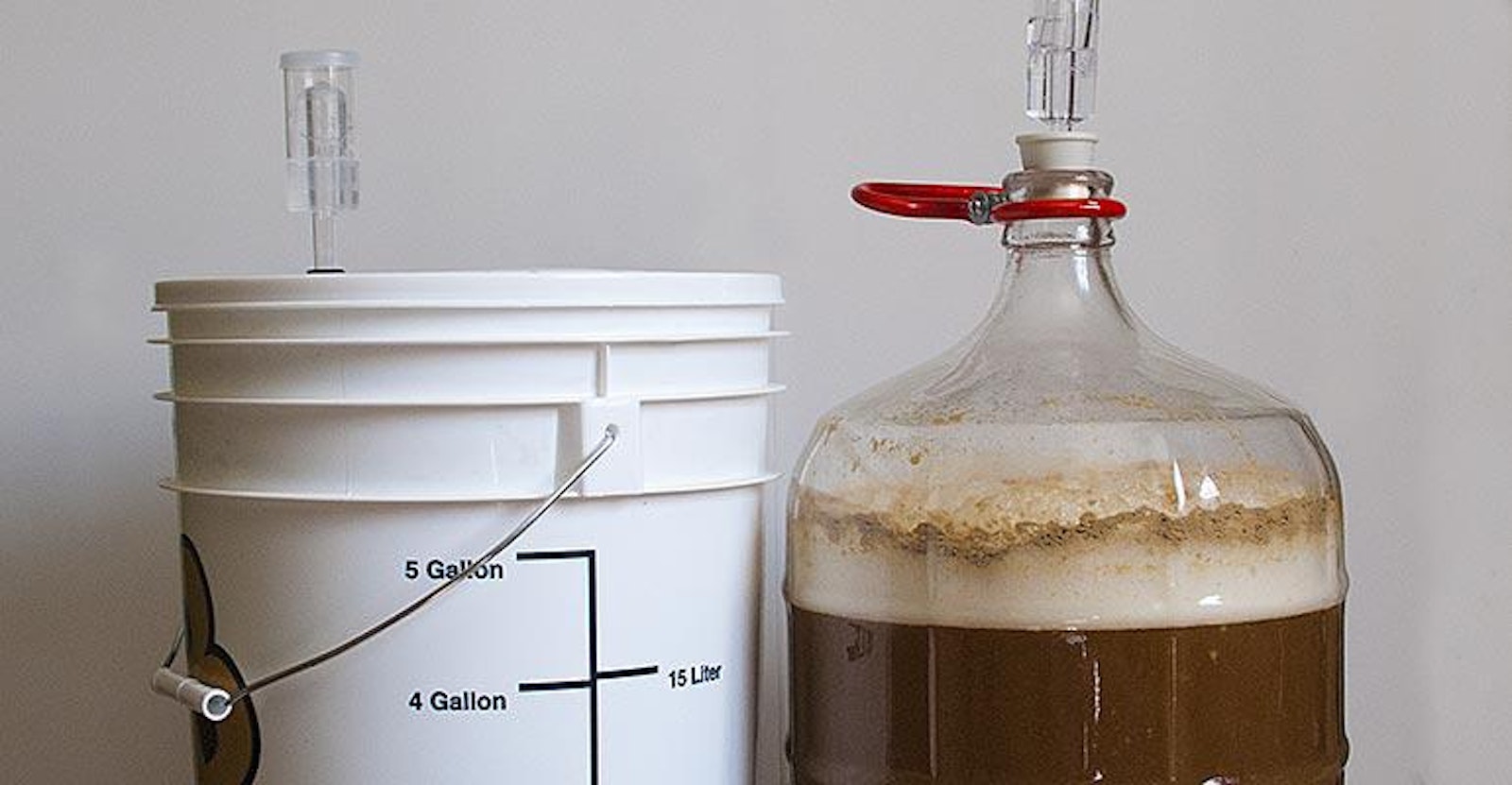For the longest time, picking a fermentor was about plastic vs. glass. Beginners often start with kits that come with plastic buckets. Experienced homebrewers tend to use glass, citing concerns about sanitizing scratched plastic.
Nowadays, there are many more options. At the more expensive end of the price range, you have corny kegs as well as stainless-steel and plastic conical fermentors, but entry-level brewers have more choices, too. Two of the big three are probably the most familiar: HDPE plastic buckets and glass carboys. But it’s also easy to find PET plastic carboys, which are comparable in price to glass, but less fragile. All three come in convenient sizes and will work fine as primary or secondary fermentation vessels, as long as you understand their tradeoffs.
Plastic Buckets
Generations of homebrewers have gotten their start with HDPE (high-density polyethylene) plastic buckets. They’re cheap and ubiquitous, sturdy, and easy to move around. The large opening makes it simple to fill and empty or to add things to the secondary, such as wood or fruit. Because they’re mostly opaque, you can’t actually see much detail during fermentation, but you also don’t need to worry about your beer getting lightstruck.
Unfortunately, the plastic has some drawbacks. HDPE plastic is gas permeable, which increases the risk of oxidation during a long secondary aging. More importantly, the plastic is fairly soft and easy to scratch. These scratches can be just about impossible to sanitize. They can be narrow enough to harbor bacteria, but surface tension can keep sanitizers from being able to get in and thoroughly clean the plastic. Over time, you may also notice the plastic discoloring. Fortunately, these plastic buckets are inexpensive enough that they can be replaced whenever there’s a concern.
You can extend the lifetime of your plastic buckets by never using a brush or scrubbing pad to clean the inside. Don’t use fermentation buckets to stash equipment, and don’t use them to store sanitizers or harsh chemicals for extended periods of time. It’s also important to clean and sanitize the lid, including the rubber seal.
Finally, remember to use food-grade plastic buckets. The orange bucket from the hardware store is cheaper, but there are no guidelines for the food safety of the colorant mixed in with the plastic.
Glass Carboys
Glass carboys are so popular because they directly address the big weakness of HDPE plastic. Glass is hard and scratch-resistant, so cleaning and sanitation are rarely an issue. Glass is also impermeable to gas. So, as long as you’re careful not to splash the beer around, you’re unlikely to have oxidation problems.
You will have to cover the carboy or keep it in a dark place to avoid picking up skunky, lightstruck aromas and flavors, but that’s not so hard. The bigger problem is that glass is heavy and fragile. While a five-gallon bucket weighs a couple of pounds, the same size glass carboy is closer to 12. The extra weight makes it harder to move safely, and breakage is a major concern. Aside from drops and cracks from setting it down on a concrete floor, you also need to be careful using carboy handles because they can stress the neck and provide another breaking point.
With care, you may never have a problem. In thirty years of brewing, I’ve shattered only two, and both times I was lucky that no one was injured by the sharp chunks of glass that spread throughout the room.
PET Carboys
PET (polyethylene terephthalate) carboys offer a good balance between plastic buckets and glass carboys. They’re very light, but they’re also sturdy. I’ve never broken one, but even if I did, it wouldn’t present the same danger as scattered glass shards. Generally, you can treat a PET carboy much as you would a glass one. The PET is similarly impermeable to oxygen, it won’t discolor as the buckets do, and you’ll need to keep it out of the light during fermentation.
The main weakness is that, even though PET is a harder plastic than HDPE, it is still vulnerable to scratching, so it should never be cleaned with a brush. Additionally, some PET carboys will flex, so picking them up by the neck can draw air into the fermentor.
Make Your Pick
Any of these choices will work great, as long as you address their weaknesses. That means avoiding brushes and other hard tools when using buckets or PET carboys to minimize scratching. If you decide to go with glass instead, you should be aware of the slippery surfaces in your brew area and also use a carrier when moving your carboy.
You can also mix it up: I still use a ported plastic bucket for bottling, and I’ve been migrating my fermentors from glass to PET bottles to take advantage of the lighter weight.
In Part 2, I will talk about some of the pricier, but really cool alternatives, such as conical fermentors.

